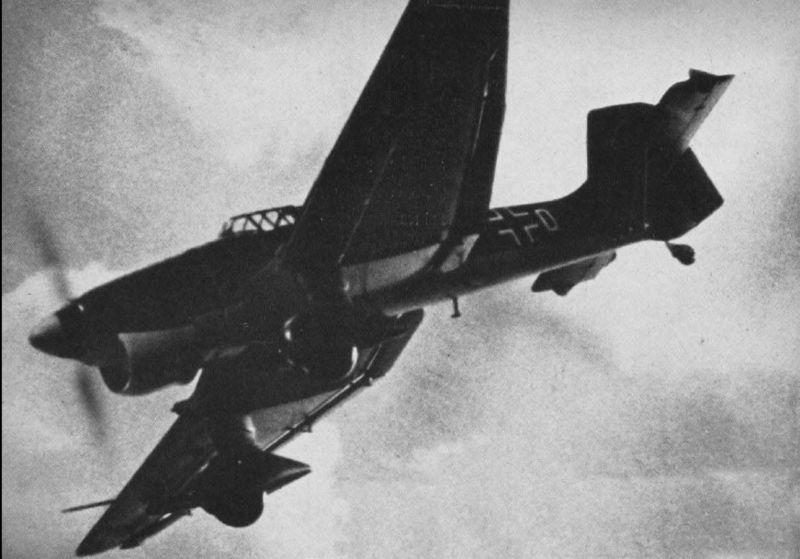Ju-87 "Stuka" Dive Bomber
Perhaps the most famous dive bomber of the Second World War, the Ju-87 "Stuka", also represented an intense developmental effort. It was one thing for the Luftwaffe to be constructed from scratch in only a few years, however, the Luftwaffe also sought to build in a balanced, yet cost-effective fashion. The decision to develop vertical attack aircraft meant the Luftwaffe was forced from early on to put assets into creating aircraft and training aircrews capable of effectively conducting precision dive - bombing; an effort producing substantial technical challenges. These challenges stemmed directly from the difference between creating bombers maintaining level flight over a target, and bombers that drop from the sky directly toward a target.
When attacking, the Stuka pilot initially flew his aircraft directly over the target. At this the method for dropping the bomb load deviated substantially from the tactics employed by the level bomber pilot. The dive-bomber pilot, from heights reaching 6,000 feet, put the plane into a half role and entered a near vertical dive once over the target. This dive only ended 1,000 feet above a target often hit with a frightening degree of accuracy; thanks to the pilots ability to look down directly at his victim and release the bomb load at the optimal moment. Owing to the incredible gravitational forces the dive put on both the plane and pilot, Germany had developed a new suite of technologies; such as new bombsights and automatic contact altimeters, to pull the Stuka from its dive with minimal effort from the pilot.
The Stuka served throughout the war as Germany's primary close air support aircraft, and although carrying a range of new technologies that enabled its pilots to achieve a high degree of accuracy; it nevertheless was a slow, short-range aircraft capable carrying no more than a light bomb load of 1000 lbs for any reasonable distance. The inadequate range possessed by the Stuka regrettably for Germany was not unique to the Luftwaffe's attack aircraft.
Picture Courtesy of the U.S. Navy


